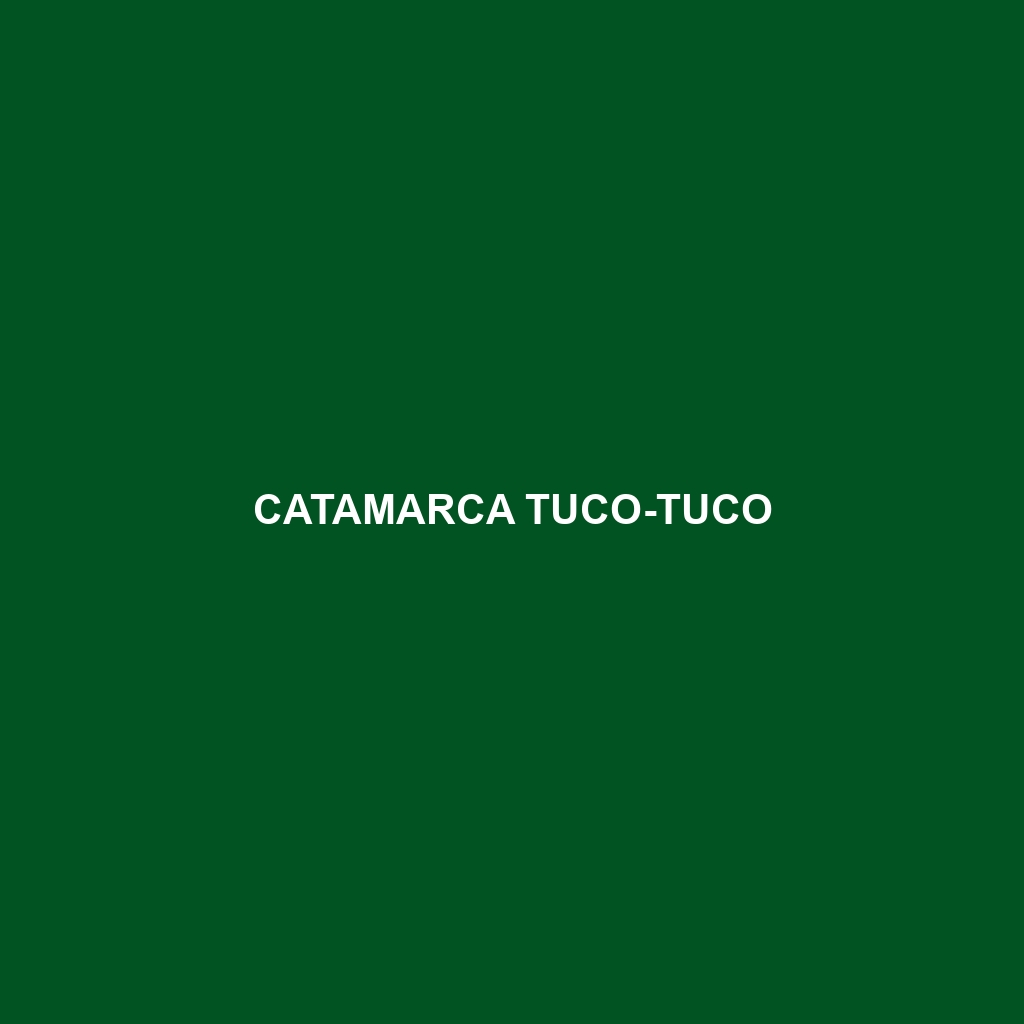Catamarca Tuco-tuco
Common Name: Catamarca Tuco-tuco
Scientific Name: Ctenomys sp. (exact species name may vary as it is under study)
Habitat
The Catamarca Tuco-tuco is primarily found in the arid and semi-arid regions of Catamarca Province in Argentina. This rodent inhabits dry grasslands and open shrublands, often associated with areas having sandy or loose soil, which are essential for its burrowing activities. The species prefers elevations between 1,500 to 2,500 meters.
Physical Characteristics
The Catamarca Tuco-tuco is a medium-sized rodent, typically measuring between 20 to 30 centimeters in length, including its tail. Its coat is a mix of dark brown and light sandy hues, providing excellent camouflage in its natural habitat. One distinctive feature is its robust body shape, complemented by short limbs and large, powerful claws adapted for digging. The animal’s cheek pouches are also notable, used for storing food.
Behavior
This species is primarily nocturnal and solitary, exhibiting a range of behaviors that include extensive burrowing and territory marking. Catamarca Tuco-tucos are known for their intricate tunnel systems, which serve as protection from predators and as a storage space for food. They communicate through vocalizations and scent markings, particularly during the breeding season.
Diet
The diet of the Catamarca Tuco-tuco mainly consists of >grasses, roots, and tubers. These rodents are herbivores that have adapted to a diet suitable for their arid environment, often foraging during the early evening hours. Their feeding habits play a crucial role in maintaining the health of the grasslands they inhabit.
Reproduction
Breeding occurs during the warmer months, typically between October and January. Female Catamarca Tuco-tucos give birth to a litter of approximately 2 to 6 offspring after a gestation period of around 3 weeks. The young are born hairless and helpless, relying heavily on their mother for care during the first few weeks of life. Parental care is intensive, and mothers often create separate nesting chambers within their burrows for the young.
Conservation Status
The Catamarca Tuco-tuco is currently classified as Vulnerable according to the IUCN Red List. Its population is threatened by habitat destruction due to agricultural expansion and urban development, making conservation efforts essential to ensure the survival of this unique species.
Interesting Facts
Catamarca Tuco-tucos are known for their remarkable burrowing abilities, capable of digging tunnels that can extend several meters deep. Additionally, they are considered an important prey species in their ecosystem, supporting local predators. Their ability to store food in their burrows plays a significant role in their survival during harsh conditions.
Role in Ecosystem
As a burrowing rodent, the Catamarca Tuco-tuco significantly impacts its ecosystem by aerating the soil, which promotes plant growth. They serve as a food source for various predators, including birds of prey and mammals. Their foraging habits also contribute to seed dispersal, facilitating plant diversity within their habitat.
